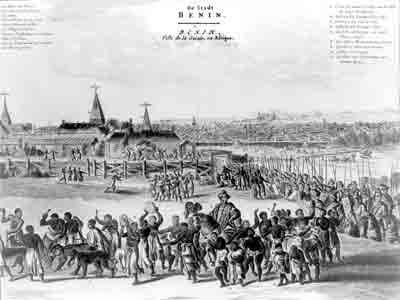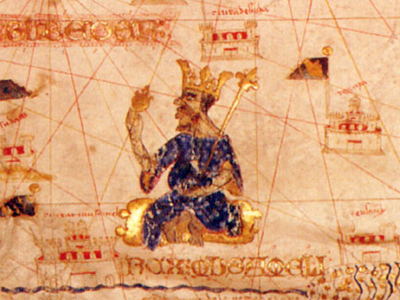
|
|
Africa
"The enemies of Africa wish to persuade the world that five out of the six thousand years that the world has existed, Africa has always been sunk in barbarism, and that ignorance is essential to the nature of her inhabitants. Have they forgotten that Africa was the cradle of the arts and sciences? If they pretend to forget this, it becomes our duty to remind them of it."
Baron De Vastey, African Haitian, 1817
|
Background
The belief that Africa had no history prior to the arrival of Europeans on the continent was propagated in order to justify the enslavement of its people. Nothing, however, was further from the truth – the contributions of Africa and Africans to science, agriculture, social and political systems are significant. Its richness and diversity is evident in the ancient buildings that still stand to remind us of the empires and kingdoms that existed from the time of the Egyptians and before. Early European visitors marvelled at the sophisticated societies, architecture, trading systems and academia of the Songhai, Mali, Benin and Ife kingdoms. The kingdom of Mali was reputed to be one of the richest and most powerful states in the world. The University of Sankore in Timbuktu was at the centre of scientific innovation; where Aristotle was studied along with astronomy, law and philosophy, at roughly the same time of the European medieval and Renaissance periods.
|

Benin City in the 17th Century
©The British Library
|
|
The pamphlet was an important abolitionist tool in the presentation of Africa as a continent of diverse peoples and societies with unique customs, and abundant with natural resources. It was hoped that this knowledge would let the reader understand that Africa was more than just a place where its inhabitants could be captured and enslaved. “That African abounds with treasure which accident has already discovered”, wrote Thomas Clarkson in . “The barks, woods, roots, fruits and leaves have hardly been noticed by any naturalist; and the stones, earths, bitumen and ores have not been so much seen by the eye of the chemical observer".
| 
Mansa Musa of Mali, ruler of one of the richest kingdoms in the 14th century
© Every Generation Media
|
|
Mothers were not unlike those in England in their concern for the welfare of their children – “the women assist each other in the education of their children, in which they take great pains”, asserted CB Wadstrom, in his .
It was suggested by some authors that trading material goods with Africans was a better alternative to trafficking. “If their princes were allowed to trade freely and unmolested – not in slaves, but in the products of their fertile country – would they not willingly yield us their beauteous woods, their oils, gums, perfumes and precious stones?” asked John Lowe in his tract .
Narratives from the Collection
Observations on the slave trade from the coast of Guinea, during a voyage made in 1787 and 1788
Scripture to the friend of freedom, exemplified by a refutation of the arguments offered in defence of slavery in a tract entitled scriptural researches on the licitness of the slave trade
Letters relative to a voyage undertaken to Africa in 1787, for the purpose of promoting a plan for a new and independent settlement on the western coast
Liberty or Death – a tract by which is vindicated the obvious practicability of trading to the coasts of Guinea for its natural products, in lieu of the slave trade
A Letter on the abolition of the Slave Trade; addressed to the freeholders
A letter on the abolition of the slave trade by W. Wilberforce
|
Test Your Knowledge
|

